 Last week I was out to lunch with two male non-profit friends in downtown Chicago when the topic of women board volunteers came up. This happens from time-to-time, and when it does I always bite my tongue because I tend to have strong opinions on this subject. So, I took a deep breath and prepared for what I assumed was going to be one of those “difficult and uncomfortable conversations“. Boy oh boy . . .was I wrong (and pleasantly surprised).
Last week I was out to lunch with two male non-profit friends in downtown Chicago when the topic of women board volunteers came up. This happens from time-to-time, and when it does I always bite my tongue because I tend to have strong opinions on this subject. So, I took a deep breath and prepared for what I assumed was going to be one of those “difficult and uncomfortable conversations“. Boy oh boy . . .was I wrong (and pleasantly surprised).
Let me start by explaining what I mean by “I have strong opinions . . .” The fact of the matter is that my opinions are sexist (at least I think they are). When I am engaged in conversations about non-profit board development and I’m feeling bold, I like to say, “If you want lots of discussion in the boardroom about what ‘should’ happen, then recruit a lot of men to serve on your board because they will talk a subject to death. If you want something done, recruit some women because they are the ‘do-ers’ of our society.”
A good friend of mine would respond to this by saying, “All generalizations, including this one, are incorrect.”
So, I usually shy away from sharing this opinion because:
- It feels like a sexist thought
- It has gotten me in trouble in the past and sparked heated discussions
- The “all generalizations” comment is usually right on target
Let’s fast forward to my lunch conversation in downtown Chicago last week as I prepared for a lunch discussion that I assumed was going down the wrong road.
The first words out of one guy’s mouth were positive and progressive. He shared a story about the women on his board being extraordinarily active and engaged. The other guy talked about wanting to develop what used to be called in the old days a “women’s auxiliary” (and he was calling a Women’s Board). As I shook my head in amazement at the surprising turn this conversation quickly took, the most amazing thing happened. One of the guys validated what I keep referring to as “my sexist opinion” by pointing to research data that he just read about in the OpEd pages of the New York Times on October 23, 2013.
I couldn’t believe my ears, and I asked my lunch partners to please forward me that editorial column.
It arrived the next day in my email inbox. It almost looked like that one special Christmas present that you most prized and treasured as a child (and in the spirit of A Christmas Story read this as me saying that email was the equivalent of an Official Red Ryder Carbine-Action Two-Hundred-Shot Range Model Air Rifle).
The editorial was titled “Twitter, Women and Power,” and it was about the all male boardroom at Twitter, which was just a few weeks from launching its IPO on Wall Street.
I strongly encourage everyone who has any role in your non-profit organization’s board development to read this article. It is definitely worth the click! However, for those of you working with very little time today, here are a few of the major points from the article:
- Domestic companies that have women board members earn a higher rate of return on invested capital
- International companies with women on their boards earn a surprisingly higher amount of operating capital
- During the recent government shutdown, it was our nation’s female legislators who were at the forefront of brokering a deal
After reading this New York Times editorial piece by Nicholas Kristof, I now feel empowered enough to admit that I think women are better fundraising volunteers than their male counterparts. (Uh-oh . . . that little voice inside my head is telling me to shut-up again.)
Does your agency have enough women in the boardroom? How does your board development committee ensure gender balance? What has been your experience on this issue? Please use the comment box below to share your thoughts and opinions.
Here’s to your health!
Erik Anderson
Founder & President, The Healthy Non-Profit LLC
www.thehealthynonprofit.com
erik@thehealthynonprofit.com
http://twitter.com/#!/eanderson847
http://www.facebook.com/eanderson847
http://www.linkedin.com/in/erikanderson847

 Sorry about not being able to post yesterday, but it was a crazy busy day because I was one of the co-chairs for
Sorry about not being able to post yesterday, but it was a crazy busy day because I was one of the co-chairs for  Positioning Your Board for More Effective Fundraising
Positioning Your Board for More Effective Fundraising Lunch: Celebrating 100 years of philanthropy
Lunch: Celebrating 100 years of philanthropy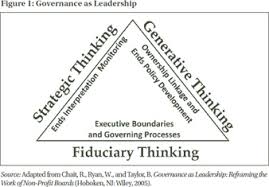 Dani is a big fan of Richard Chait and talked a lot about his
Dani is a big fan of Richard Chait and talked a lot about his  Don’t look now, but we are seven weeks away from drinking champagne and celebrating the end of 2013 and the start of a Happy New Year 2014. It is this time of the year when non-profit organizations are super busy. Many of you are closing out your fiscal year, and almost every non-profit with a pulse is executing its year-end giving strategy.
Don’t look now, but we are seven weeks away from drinking champagne and celebrating the end of 2013 and the start of a Happy New Year 2014. It is this time of the year when non-profit organizations are super busy. Many of you are closing out your fiscal year, and almost every non-profit with a pulse is executing its year-end giving strategy. I just finished helping a client with their year-end mail appeal. The executive director called on Friday to report the letters were delivered to the post office and we both did a little happy dance. The next thing on his year-end fundraising task list is preparing for the phone-a-thon follow-up the week of Thanksgiving.
I just finished helping a client with their year-end mail appeal. The executive director called on Friday to report the letters were delivered to the post office and we both did a little happy dance. The next thing on his year-end fundraising task list is preparing for the phone-a-thon follow-up the week of Thanksgiving.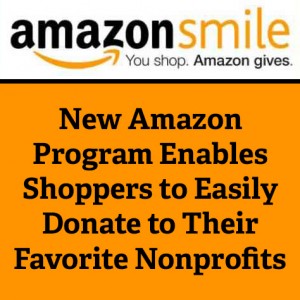 Holiday shopping appeals
Holiday shopping appeals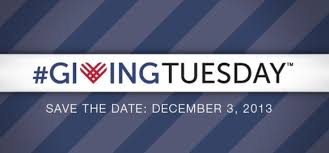 #GivingTuesday
#GivingTuesday I am a member of Gen-X, and I behave like a typical person of that generation especially when it comes to my mailbox. I hate going to the mailbox. I hate opening mail because 99.9% of it is junk. Anything important comes to me via email, and all of my bills and charitable giving is set-up using automatic bill pay. So, imagine my surprise the other day when I was opening a three-week stack of mail, and I came across a handwritten envelope from one of my favorite local charities.
I am a member of Gen-X, and I behave like a typical person of that generation especially when it comes to my mailbox. I hate going to the mailbox. I hate opening mail because 99.9% of it is junk. Anything important comes to me via email, and all of my bills and charitable giving is set-up using automatic bill pay. So, imagine my surprise the other day when I was opening a three-week stack of mail, and I came across a handwritten envelope from one of my favorite local charities.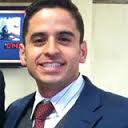 It happens every year. My partner and I get a phone call from Cindy, who is Ernie Gamino’s assistant, and she asks us to please schedule a year-end sit down meeting. Ernie is our Edward Jones financial advisor, and getting time in both of our calendars is a challenge. However, we found some time this past Saturday. I’m glad we did because I discovered that Ernie is a really good fundraising professional, who has never been trained as one or worked at a non-profit organization. We can all learn a lot from Ernie and his colleagues.
It happens every year. My partner and I get a phone call from Cindy, who is Ernie Gamino’s assistant, and she asks us to please schedule a year-end sit down meeting. Ernie is our Edward Jones financial advisor, and getting time in both of our calendars is a challenge. However, we found some time this past Saturday. I’m glad we did because I discovered that Ernie is a really good fundraising professional, who has never been trained as one or worked at a non-profit organization. We can all learn a lot from Ernie and his colleagues. I started the meeting off by growling at poor Ernie. I wanted to know why this annual meeting is necessary? Can’t he just go about doing his job and call me when he needs to get permission to do something with my investment portfolio.
I started the meeting off by growling at poor Ernie. I wanted to know why this annual meeting is necessary? Can’t he just go about doing his job and call me when he needs to get permission to do something with my investment portfolio.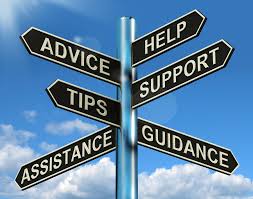 We talked about his Northern Illinois University (NIU) football team and the state of the BCS football system.
We talked about his Northern Illinois University (NIU) football team and the state of the BCS football system.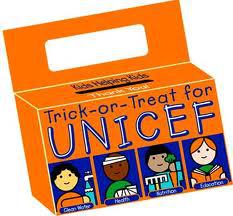 I just love this time of the year. The temperature outside is lovely. Trees are turning colors and putting on a show. Charity is coming into focus for millions of Americans. Last year approximately 174 million Americans donated approximately $50 billion to charities during the holiday season. While most resource development people will tell you this all starts with Thanksgiving, I contend that Halloween is when the starters gun goes off in my head.
I just love this time of the year. The temperature outside is lovely. Trees are turning colors and putting on a show. Charity is coming into focus for millions of Americans. Last year approximately 174 million Americans donated approximately $50 billion to charities during the holiday season. While most resource development people will tell you this all starts with Thanksgiving, I contend that Halloween is when the starters gun goes off in my head. I love Monday mornings! I wake up, feed the dog and cat, grab a cup of coffee, sit down at my computer and open my email, and most Monday mornings involves watching “
I love Monday mornings! I wake up, feed the dog and cat, grab a cup of coffee, sit down at my computer and open my email, and most Monday mornings involves watching “ Last week I was in Reno, Nevada at Boys & Girls Clubs of America’s (BGCA) Pacific Leadership Conference. This week I am in Mashantucket, Connecticut at BGCA’s Northeast Leadership Conference. The common denominator is that I am helping organize and facilitate a training track for executive directors and school superintendents. One of the sessions in the training track addresses the issue of data sharing, and I thought it would be a good topic to discuss today with DonorDreams readers.
Last week I was in Reno, Nevada at Boys & Girls Clubs of America’s (BGCA) Pacific Leadership Conference. This week I am in Mashantucket, Connecticut at BGCA’s Northeast Leadership Conference. The common denominator is that I am helping organize and facilitate a training track for executive directors and school superintendents. One of the sessions in the training track addresses the issue of data sharing, and I thought it would be a good topic to discuss today with DonorDreams readers. The following are just a few key strategies identified by participants that will help any non-profit organization sustain data sharing agreements with its partners:
The following are just a few key strategies identified by participants that will help any non-profit organization sustain data sharing agreements with its partners: When I was an internal consultant working for Boys & Girls Clubs of America (BGCA), my team was charged with helping local affiliates build their organizational capacity around resource development. In the beginning, there were two sides of our team — annual campaign support and planned giving support. As time passed, our team focused on creating a third vehicle of service — major gifts.
When I was an internal consultant working for Boys & Girls Clubs of America (BGCA), my team was charged with helping local affiliates build their organizational capacity around resource development. In the beginning, there were two sides of our team — annual campaign support and planned giving support. As time passed, our team focused on creating a third vehicle of service — major gifts. Of course, there will likely be a HUGE difference between me making a recipe and the Barefoot Contessa (aka Ina Garten) making the same dish. I suspect there will be huge differences in results between small and large non-profit organizations. In my opinion, here are just a few things that will make a difference:
Of course, there will likely be a HUGE difference between me making a recipe and the Barefoot Contessa (aka Ina Garten) making the same dish. I suspect there will be huge differences in results between small and large non-profit organizations. In my opinion, here are just a few things that will make a difference: I don’t know about you, but radio plays an important role in my life. I used to live in my car traveling from client-to-client throughout the Midwest when I was an internal consultant. After opening my own consulting practice, I now travel much shorter distances, but I still spend a decent amount of time in my car. So, the radio is where I turn for a decent amount of news and entertainment, especially when I’m on the road. However, when I’m at home I don’t listen as much because I don’t get very good reception in the house, which is why I was so elated the other day when I discovered the
I don’t know about you, but radio plays an important role in my life. I used to live in my car traveling from client-to-client throughout the Midwest when I was an internal consultant. After opening my own consulting practice, I now travel much shorter distances, but I still spend a decent amount of time in my car. So, the radio is where I turn for a decent amount of news and entertainment, especially when I’m on the road. However, when I’m at home I don’t listen as much because I don’t get very good reception in the house, which is why I was so elated the other day when I discovered the